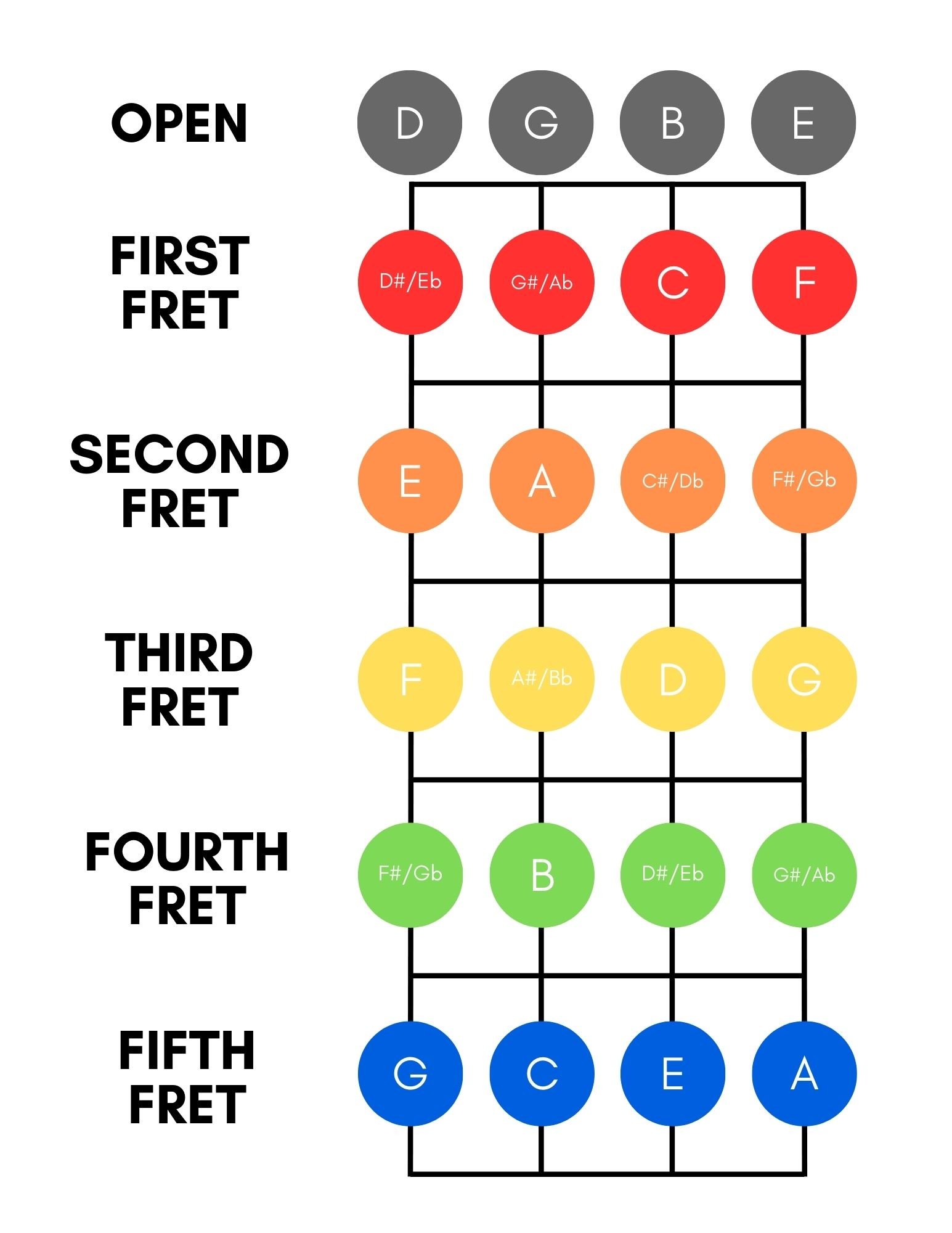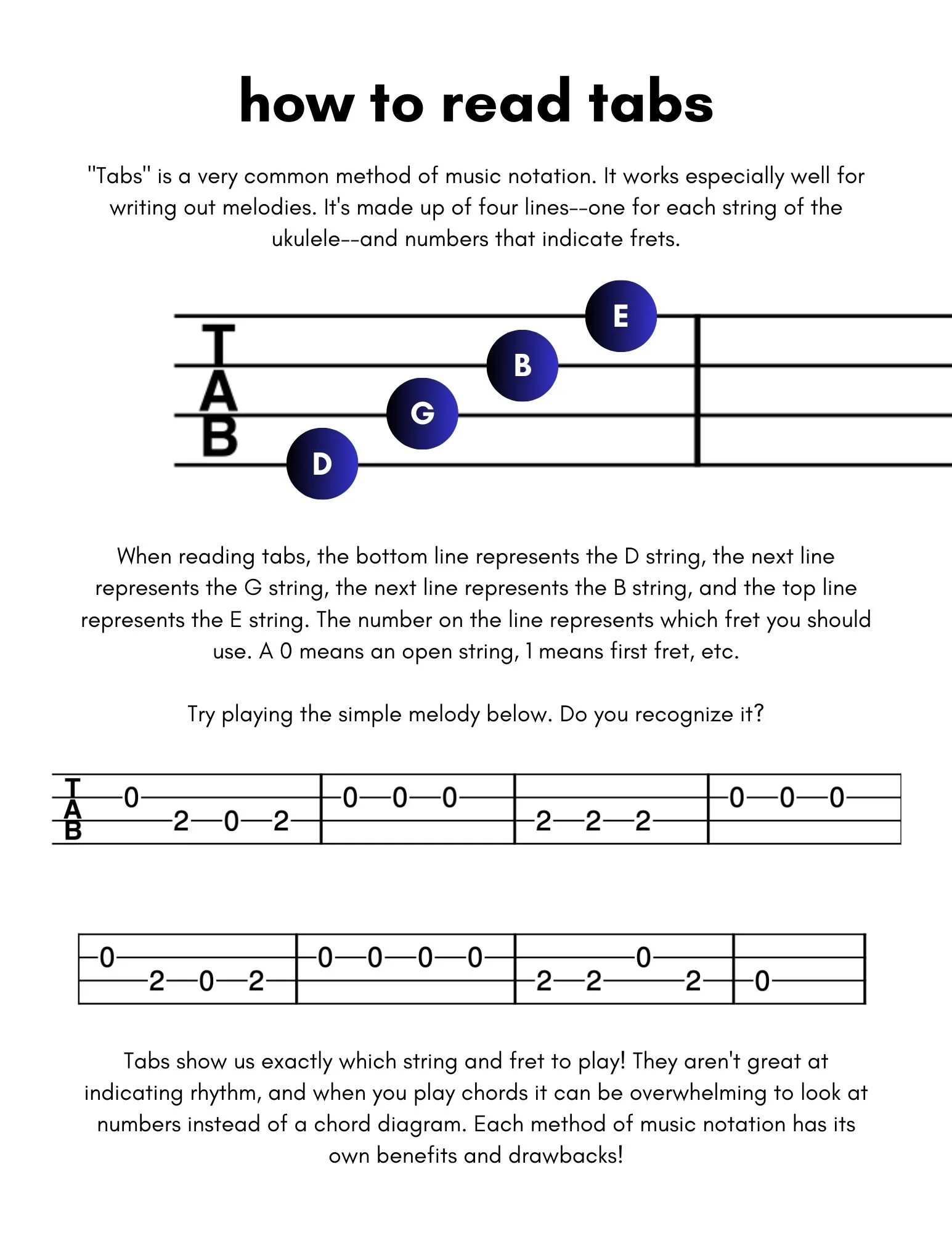NOTE NAMES - FIRST FIVE FRETS
The image below shows note names on the baritone ukulele for open strings and the first five frets. If you have trouble remembering the note names of the open strings, try putting a post-it note on your ukulele so it’s easy to see when you look down! Don’t worry about memorizing anything but the open string names right now. You can reference this image any time you’d like to learn more note names! For now, it’s good to know that “sharp” (#) means “one half step/one fret higher in pitch”, and “flat” (b) means "one half step/one fret lower in pitch”. See how D# (said “D sharp”) is one fret higher than the open D string? And Gb (said “G flat”) is one fret lower than the note G in yellow?
FIRST CHORDS - KEY OF G
The key of G happens to be one of the friendliest keys for baritone ukulele because the open strings (D, G, B, and E) are all important notes from the key of G! So learning chords in the key of G is a really wonderful place to start. I recommend doing your best to memorize as many chords as possible as you go along. Print out some blank chord diagrams and write down your favorites!
Many, many songs can be played using just four chords from any particular key. In the key of G, those chords are G, C, D, and Em. Below, I’ve listed chord diagrams for those chords in four different combinations. First, practice each chord on its own. Then try four strums of each chord for each of the exercises below.
FIRST CHORDS - KEY OF D
The key of D is also very friendly to baritone ukulele. You’ll notice that the key of D uses D and G chords, just like the key of G does! So the exercises below contain just two new chords: A and Bm (that’s said “B minor”). Again, I recommend memorizing chords as best you can. It will make it easier to build up your repertoire as you continue learning!
The key of G happens to be one of the friendliest keys for baritone ukulele because the open strings (D, G, B, and E) are all important notes from the key of G! So learning chords in the key of G is a really wonderful place to start. I recommend doing your best to memorize as many chords as possible as you go along. Print out some blank chord diagrams and write down your favorites!
As with the last exercise, practice each chord on its own first. Then try four strums of each chord for each of the exercises below.
STRUM PATTERNS IN 4/4 TIME
Below are six different strum patterns in 4/4 (“four four”) time. That means each measure has four beats. Down arrows signify a downward strum, and up arrows signify an upward strum! I’ve prepared a practice track for each strum pattern. They all use the chord progression G Em C D (number 1 on the “First Chords - Key of G” section). You’ll hear clicks and the drums to signal when to start.




